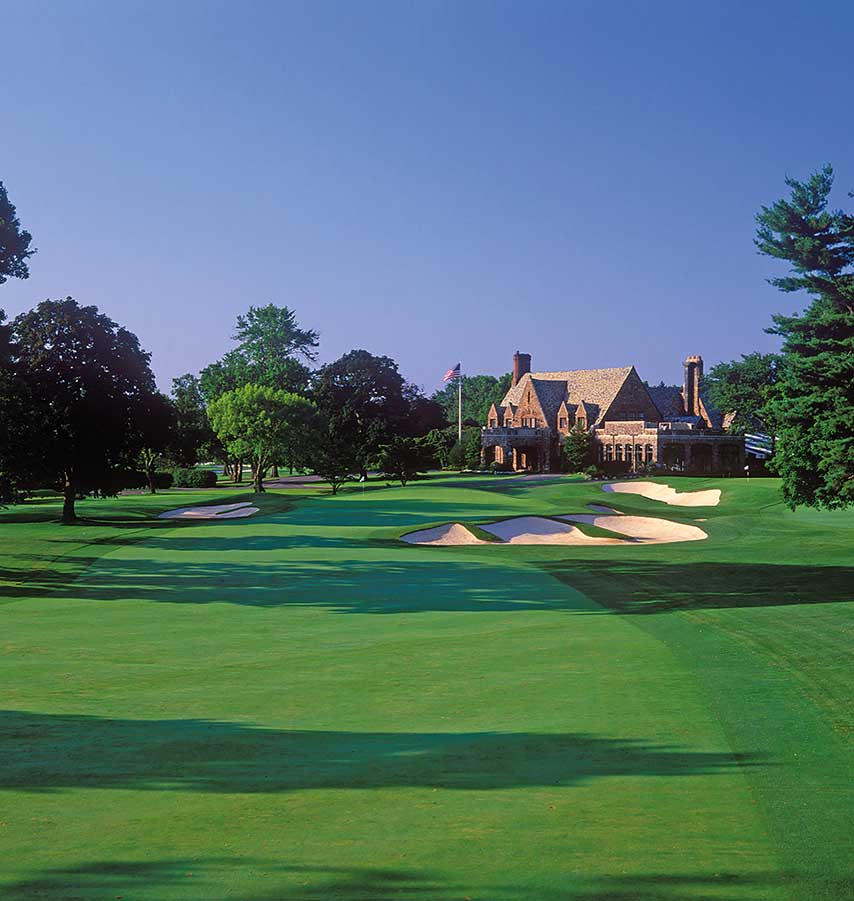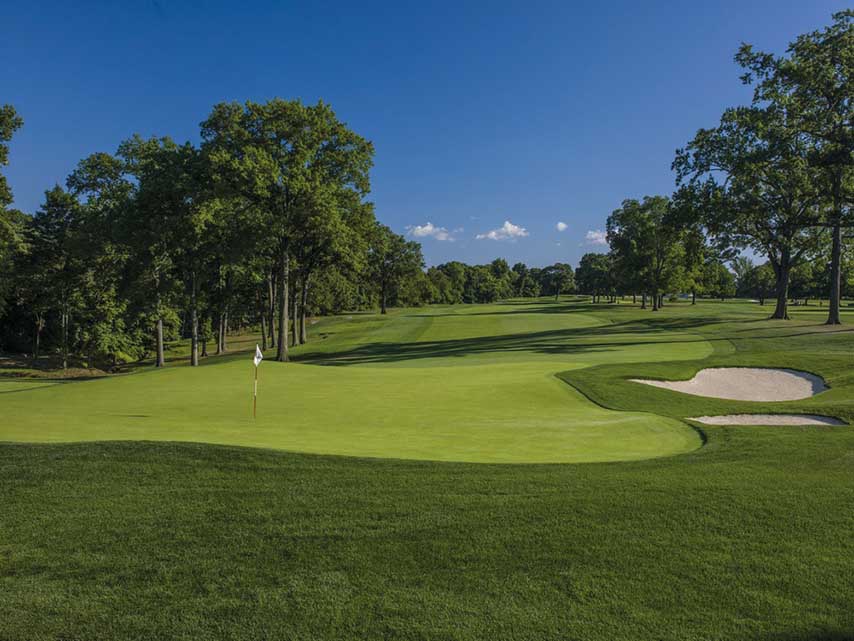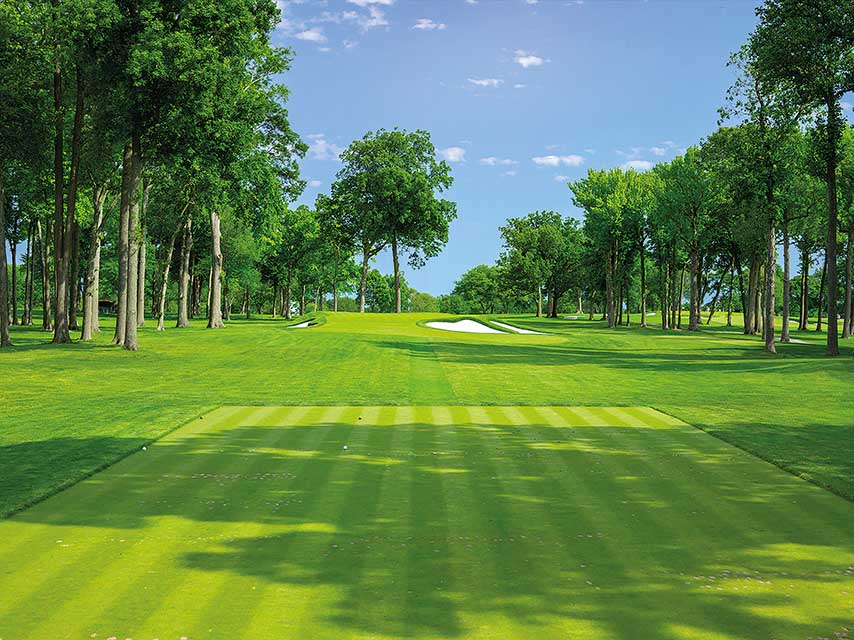It would be difficult to repeat an episode like that which was dubbed “The Winged Foot Massacre”. In 1974, many of the players competing in the US Open recorded catastrophic results. Tom Watson had carded a third-round 69 to lead the tournament by one shot over Hale Irwin, but he carded nine bogeys in his first nine holes on the final day and, after a 79, finished fifth. Irwin won the title with a 73 and a seven-over total. "We were all stunned by how difficult the course was," said the champion.
In June, Winged Foot Golf Club will – for the sixth time (1929, 1959, 1974, 1984 and 2006) in its almost 100 years of existence – once again enjoy the thrill of hosting one of the finest tournaments in the world, the US Open, and also one of the most lucrative: $12.5 million in prizemoney this year, when the major celebrates its 125th anniversary and 120th edition.

Winged Foot is known for its spectacular setting and its reputation as one of the main venues for the US Open. In 1929, six years after its inauguration, the club organised the tournament for the first time, with celebrated amateur Bobby Jones hitting one of the greatest shots in the history of the championship.
The last time this Grand Slam championship was hosted by Winged Foot (2006), Phil Mickelson was leading by one shot when the ball from his tee shot bounced into the corporate tent area, and this ended up costing him victory. Geoff Ogilvy did not waste the opportunity, and won his first and so far only major.
Winged Foot is a private club with two magnificent 18-hole courses (West, the setting for the next US Open, and East) located in Mamaroneck, New York. The designer of both layouts was A.W. Tillinghast, one of the most prolific and acclaimed golf architects of his time, with 260 courses designed or revamped by him, all of them in the United States.

Winged Foot Golf Club was founded in 1921 by a group of members of the New York Athletic Club (NYAC), who acquired a 280-hectare estate for this purpose and hired the most prominent designer of the time. Two years later, in June 1923, the two 18-hole courses were opened for play.
Construction of the golf courses must have caused a stir at the time. Winged Foot had sought the best. In addition to A. W. Tillinghast, architect Clifford Wendehack was hired to build a Tudor Scholastic-style clubhouse. Shortly after the club opened, Winged Foot hired as a professional the great Mike Brady, who had finished second in the 1911 and 1919 US Opens.

The initial founding members came from the NYAC, while renowned golfers who joined later included John Anderson, who had been second twice in the US Amateur and became a member in 1924, shortly after the course was completed. Jess Sweetser, American amateur champion in 1922 and runner-up in 1923, also joined the club that year. Other top golfers in the area moved from their clubs and became members of Winged Foot.
The club was recognised nationally when the USGA awarded the 1929 US Open to Winged Foot West. It had taken the USGA only six years, after its opening, to select the club to host a US Open. The founders wanted two exceptional courses, a remit for A. W. Tillinghast that was quite bold at the time.

Both courses have received recognition both individually and collectively. The West Course has been repeatedly ranked in the Golf Digest’s top-10 in the United States; and Winged Foot is the only golf club internationally with both its courses ranked among the 100 best in the world.
Since 1929, the club has hosted numerous top golf tournaments, highlighted of course by its six US Opens. These include four other USGA national championships: the 1997 US PGA Championship, two US Women’s Opens, a US Senior Open and two US Amateurs.
.
IN BRIEF
Playing as a Non-Member: Mission Impossible?
Despite being one of the most exclusive private golf clubs in the United States, playing at Winged Foot Golf Club is possible without being a member. The key is to sign up for sponsored charity tournaments that are organised at one of its two courses throughout the year.
Ten-Year Waiting List
Although no official information is available, according to journalistic sources, the initial joining fee to become a Winged Foot member is $200,000, and the annual fee is between $15,000 and $20,000. The applicant will need the support of members, and patience: the waiting list is 10 years.
Star Coaches
The club has had golf instructors who have later gone on to become professional golfing stars. These include the winners of the 1941, 1948 and 1956 US Masters – Craig Harmon, Claude Harmon and Jackie Burke Jr., respectively – and the 1965 PGA Championship winner, Dave Marr.
US Open Volunteers… for a $185 Payment
Approximately 4,500 people will be part of the Volunteer Program for the next US Open, which – although it was first played in 1895 – in June celebrates its 120th edition. All must agree to a minimum of four shifts, each lasting between four and six hours.
Volunteers do not receive any payment or compensation in exchange for their work at the US Open. On the contrary, they must pay $185 for the “Volunteer Package”, which includes: a valid accreditation for the seven days of the tournament (including the practice days); a meal voucher for each assigned work shift, in the volunteers’ tent; two golf shirts, a windbreaker jacket, a cap and a bottle of water.
Visiting Winged Foot to watch the best players in the world during the US Open is just a matter of loosening the purse strings. Daily ticket prices are $50 for Monday, Tuesday and Wednesday (practice rounds), $120 for Thursday and $150 for each of the last three days of the tournament.
There are also packages for several days. For example, a pass for the three days of practice rounds is $125, while one valid for the entire week of the tournament costs $625. There is another more expensive weekly pass, for $950, which entitles you to enter the Beer Garden, an outdoor facility where food and drinks are served (and paid for separately), with chairs and armchairs and TV screens to follow the tournament live, as well as its own bathrooms. There is another weekly package for $1,200 that gives access to the Sports Bar, with similar services as the Beer Garden but with the difference that it is a closed and air-conditioned installation.
.
Championship Designer
The designer of Winged Foot Golf Club’s two courses, Albert Warren “Tillie” Tillinghast, was one of the most prolific architects in the history of golf, leaving his mark (total or partial) at more than 260 courses, all of them in the United States. His name has been in the World Golf Hall of Fame since 2015.
Tillinghast was born in 1876 in Philadelphia (Pennsylvania),where his father, Benjamin, owned a rubber products company. When he married, Albert established his residence with his wife in Beverly Hills (California). He died at the home of one of his two daughters in Toledo (Ohio) in 1942, aged 66.
One of the people who inspired him most in the design of golf courses was Old Tom Morris, with whom he spent a lengthy period in St Andrews.
Several courses designed or renovated by Tillinghast have hosted numerous Grand Slam tournaments, no fewer than 50, played at 24 of his creations. Of those championships, the most frequent has been the PGA Championship, including Medinah (Tiger Woods 2006), Baltusrol (Phil Mickelson 2005) and Winged Foot (Davis Love III 1997).
It is not only the PGA of America, however, that has opted to hold its annual championships at courses designed by Tillinghast. The United States Golf Association (USGA) has organised the US Open 11 times at iconic Tillinghast courses, including Winged Foot, Bethpage State Park, Interlachen, Inverness and Colonial.
In addition to a great designer, Tillinghast was a prolific writer of golf articles, publishing around 400 in magazines over 40 years. He also authored several books about the sport.




